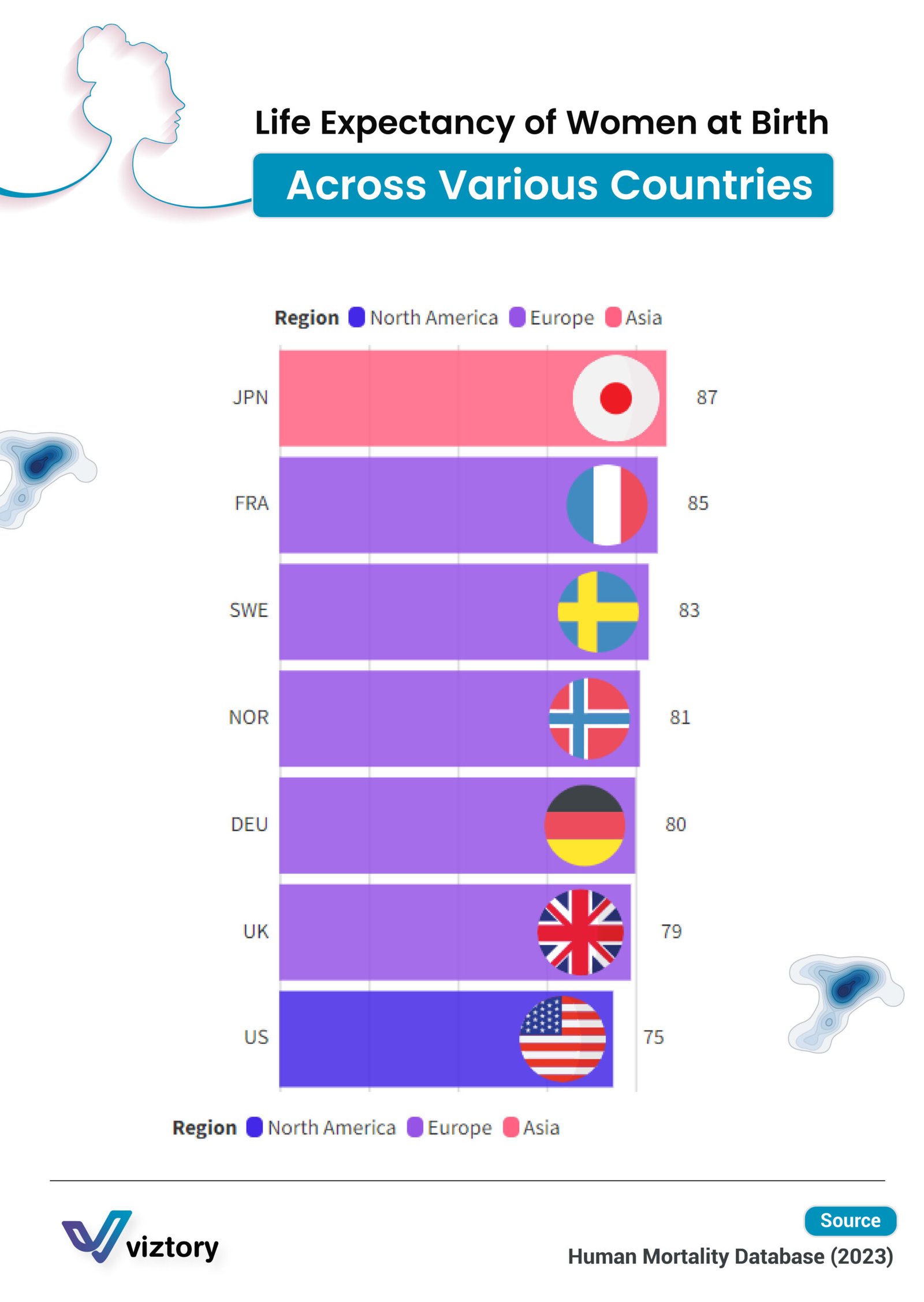Life Expectancy of Women at Birth Across Various Countries
-
Oct, Fri, 2024
Life Expectancy of Women at Birth Across Various Countries: Implications for Healthcare Systems
The visualization presents life expectancy rates for women at birth in selected countries, highlighting disparities in longevity across different regions. Japan leads with an average life expectancy of 87 years, followed by France at 85 and Sweden at 83. Meanwhile, the United States ranks lowest among the listed countries, with a life expectancy of 75 years. These differences have important implications for healthcare systems, influencing resource allocation, healthcare spending, and policy planning.
Healthcare Systems and Longevity
Countries with higher life expectancy rates, such as Japan and France, often have well-established healthcare systems that focus on preventive care, early diagnosis, and access to quality medical services. In Japan, for example, the healthcare system emphasizes regular screenings and lifestyle education, which contribute to longer life spans. These countries also invest significantly in public health initiatives, ensuring that their citizens have access to necessary healthcare services that promote longevity.
Challenges for Countries with Lower Life Expectancy
The United States, with the lowest life expectancy in the visualization, faces unique healthcare challenges that may contribute to shorter life spans. Factors such as limited access to affordable healthcare, high rates of chronic diseases, and disparities in healthcare quality play significant roles. Addressing these issues requires systemic reforms to improve access to care, reduce healthcare costs, and promote healthier lifestyles. Additionally, healthcare providers may need to focus on managing chronic conditions more effectively to enhance quality of life and increase life expectancy.
Impact of Aging Populations on Healthcare Costs
As life expectancy increases, countries face the challenge of managing the healthcare needs of aging populations. For instance, Sweden and Norway, with life expectancies of 83 and 81 years respectively, are likely to see a growing demand for elderly care services, including long-term care facilities and specialized medical care. This trend can lead to increased healthcare spending, as governments and private sectors invest in services that cater to the elderly. Policies that focus on preventative healthcare and active aging can help mitigate some of these costs by keeping older populations healthier for longer.
Preventative Healthcare and Public Health Initiatives
Countries with higher life expectancy often prioritize preventative healthcare, which has proven effective in reducing the prevalence of chronic diseases and extending life spans. Germany, for example, has implemented widespread health screenings and public health campaigns that promote healthy living. For countries looking to improve life expectancy, investing in preventative measures—such as vaccination programs, smoking cessation campaigns, and nutrition education—can have significant long-term benefits for population health and reduce the burden on healthcare systems.
Conclusion
Life expectancy is a critical indicator of a country’s healthcare effectiveness and overall quality of life. Nations with higher life expectancy rates often demonstrate successful healthcare practices that focus on prevention, accessibility, and chronic disease management. By understanding these factors, countries with lower life expectancy can explore policy changes and healthcare reforms aimed at improving longevity and ensuring that their healthcare systems can meet the needs of a growing and aging population. Through targeted investments in public health and preventative care, countries can not only increase life expectancy but also enhance the quality of life for their citizens.

